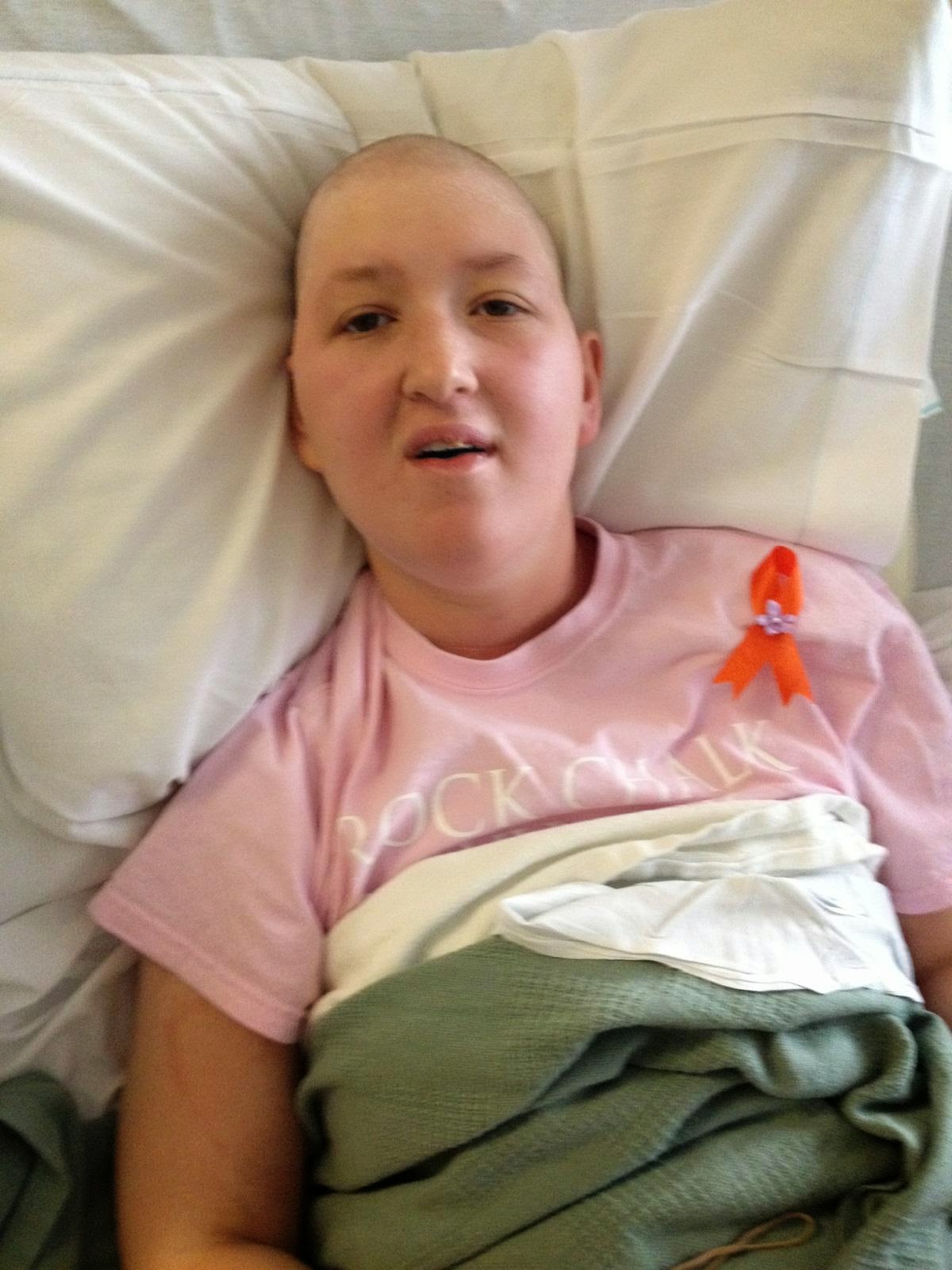Where we are in the big picture of things is we are just finishing up what they call the induction therapy part of the treatment path. The goal of induction therapy is a complete remission of the cancer. We don't expect to get the results of the biopsy until Wednesday to know if the cancer is in remission or not. Either way she should get a couple week break before her next options are initiated.
If the cancer is still present in Whitney after these two rounds of chemotherapy, the disease is then classified as what they call refractory AML. At this point we will probably have to do much more consultation and seek a second opinion from another hospital. Not a path we want to venture down.
Hopefully the cancer will be declared in remission and we initiate the transplant process.Here is a brief explanation of that process from cancer.net:
During a stem cell transplant, diseased bone marrow (the spongy, fatty tissue found inside larger bones) is destroyed with chemotherapy and/or radiation therapy and then replaced with highly specialized stem cells that develop into healthy bone marrow. Although this procedure used to be referred to as a bone marrow transplant, today it is more commonly called a stem cell transplant because it is stem cells in the blood that are typically being transplanted, not the actual bone marrow tissue.We are expecting the transplant phase to be around 100 days total with about 30 days of in-patient treatment and 70 days of out-patient treatment.
Changing the subject a little, the neurology team has diagnosed Whitney with an additional disorder called Dystonia. The definition of Dystonia from the National Institute of Health is:
Dystonia is a disorder characterized by involuntary muscle contractions that cause slow repetitive movements or abnormal postures. The movements may be painful, and some individuals with dystonia may have a tremor or other neurologic features. There are several different forms of dystonia that may affect only one muscle, groups of muscles, or muscles throughout the body. Some forms of dystonia are genetic but the cause for the majority of cases is not known.This would be what Whitney is referring to as her shakiness. It is the twitching that people have seen when they visited. This disorder would be in addition to her Cerebral Palsy that is causing the posturing or the rigidness. Reading through the material on this, I think this has been an underlying issue that Whitney manages to keep suppressed when she is completely healthy. The biggest concern at this point is if the chemotherapy has made it worse, or if it is just fatigue. The answer to that question will come with time.
I will sign off for now as I must get the castle ready for the arrival of the princess arrival later today. I will provide updates on the facebook page as things progress today.
#TeamWhitney because #NoOneFightsAlone
~Doug

















